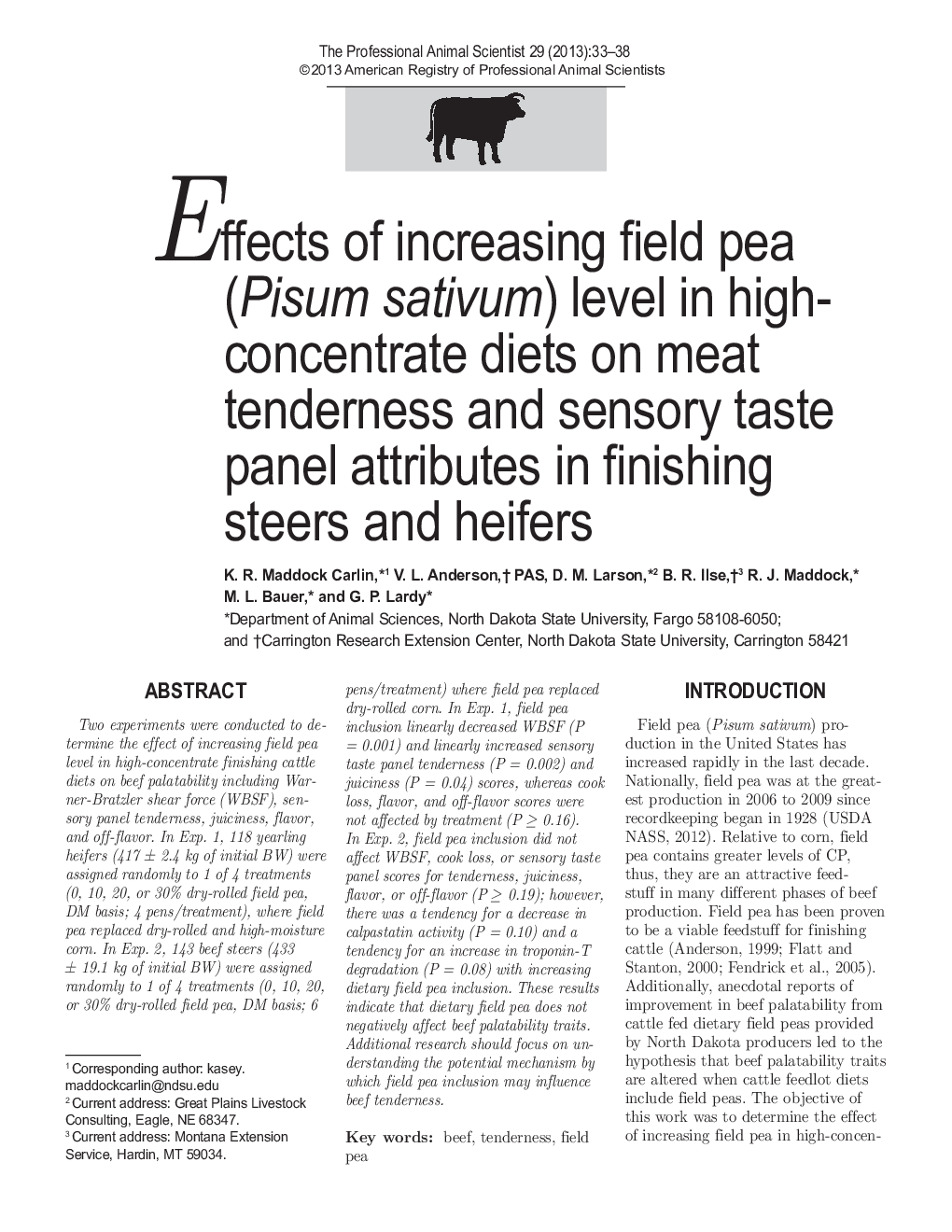| Article ID | Journal | Published Year | Pages | File Type |
|---|---|---|---|---|
| 2454035 | The Professional Animal Scientist | 2013 | 6 Pages |
Abstract
Two experiments were conducted to determine the effect of increasing field pea level in high-concentrate finishing cattle diets on beef palatability including Warner-Bratzler shear force (WBSF), sensory panel tenderness, juiciness, flavor, and off-flavor. In Exp. 1, 118 yearling heifers (417 ± 2.4 kg of initial BW) were assigned randomly to 1 of 4 treatments (0, 10, 20, or 30% dry-rolled field pea, DM basis; 4 pens/treatment), where field pea replaced dry-rolled and high-moisture corn. In Exp. 2, 143 beef steers (433 ± 19.1 kg of initial BW) were assigned randomly to 1 of 4 treatments (0, 10, 20, or 30% dry-rolled field pea, DM basis; 6 pens/treatment) where field pea replaced dry-rolled corn. In Exp. 1, field pea inclusion linearly decreased WBSF (P = 0.001) and linearly increased sensory taste panel tenderness (P = 0.002) and juiciness (P = 0.04) scores, whereas cook loss, flavor, and off-flavor scores were not affected by treatment (P ⥠0.16). In Exp. 2, field pea inclusion did not affect WBSF, cook loss, or sensory taste panel scores for tenderness, juiciness, flavor, or off-flavor (P ⥠0.19); however, there was a tendency for a decrease in calpastatin activity (P = 0.10) and a tendency for an increase in troponin-T degradation (P = 0.08) with increasing dietary field pea inclusion. These results indicate that dietary field pea does not negatively affect beef palatability traits. Additional research should focus on understanding the potential mechanism by which field pea inclusion may influence beef tenderness.
Keywords
Related Topics
Life Sciences
Agricultural and Biological Sciences
Animal Science and Zoology
Authors
K.R. Maddock Carlin, V.L. PAS, D.M. Larson, B.R. Ilse, R.J. Maddock, M.L. Bauer, G.P. Lardy,
